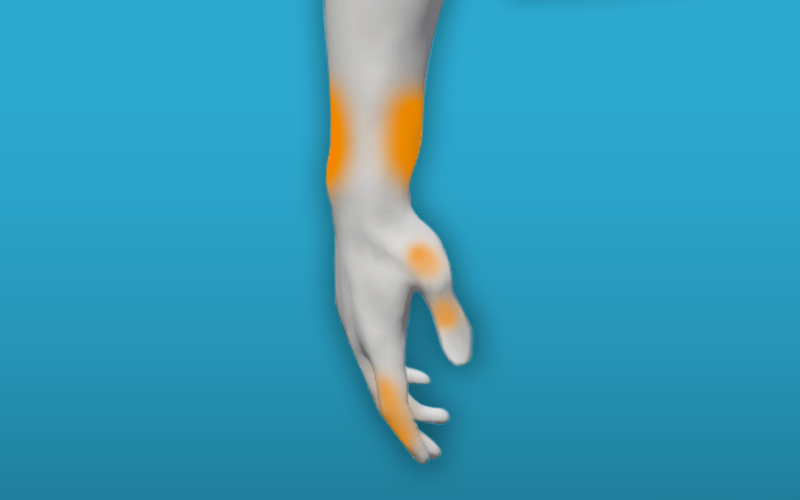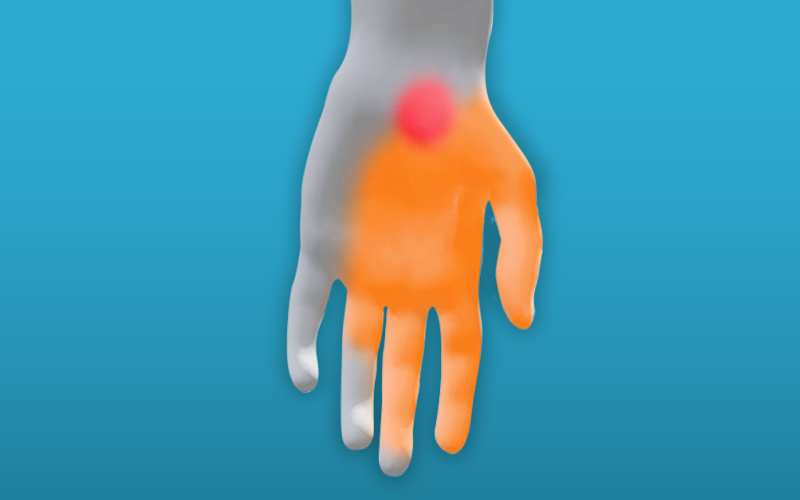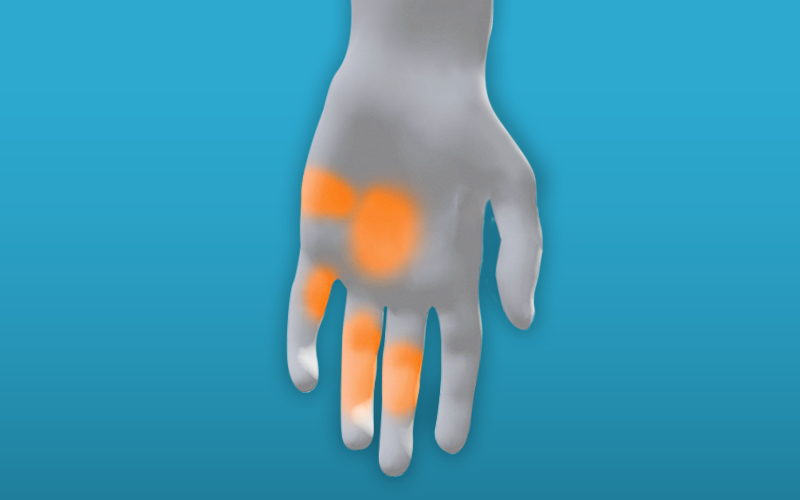Wrist & Hand Pain
The Hand and Wrist
The human hand and wrist is a complex mechanism to perform functional activities which are integral for daily tasks.
The hand and wrist have a total of 29 bones arranged to roll, spin and slide allowing the hand to explore and control the environment and objects. The wrist joint is where the forearm bones (radius and ulna) meet the carpal bones of the hand. Both the wrist and hand are supported by a large number of ligaments, tendons and muscles to enable very fine and complex movements of the hand.
What are the common causes of hand and wrist pain?
Common causes of musculoskeletal related pains tend to originate from bones, ligaments, tendons and muscles. These symptoms tend to settle with time and good self-management.
These pains may be a result of an acute injury or a flare up of a long standing issue. Simple advice is keep active and keep moving, it will often settle with time.
Click on the following information to find out about common conditions related with wrist and hand pain.
Common conditions of the hands and wrists
See below for the common signs and symptoms with a link to the MSK Matters page on how best to manage it.



Early management of sprains and strains
Click here for more information on early management of sprains and strains
Osteoarthritis of the thumb
- Swelling, tenderness on the base of thumb
- Stiffness and loss of motion while trying to move thumb
- Weaknesses while trying to grip, pinch or grasp.
- Bony bump on base of thumb
Click here for more information on osteoarthritis of the thumb
Osteoarthritis of the fingers
- Pain felt on the affected joint
- Pain increases with movement
- Joint stiffness early morning and after activity
- Swelling around the affected joint
- Grating, popping, cracking felt during movement
- Hard lumps or bony bumps felt in the affected joints
Click here for more information on osteoarthritis of the fingers



Osteoarthritis of the wrist
- Pain felt around the wrist
- Loss of movement
- Swelling around wrist
- Grinding, clicking and cracking during wrist movement
- Bony bumps or change in shape of the wrist in advanced stages
Click here for more information on osteoarthritis of the wrist
Carpal Tunnel Syndrome (CTS)
- Tingling and numbness in the hand, usually thumb, index, middle and ringer fingers are affected
- Pain may travel to arm from wrist
- Weakness on hand grip and pinch
- At early stages shaking out the hand or stretching the wrist will ease the symptoms
Click here for more information on carpal tunnel syndrome
Trigger finger or thumb
- Catching or locking of the finger or thumb
- Difficulty fully bending the finger
- Pain common in the palm of the hand
- Palpable lump at the base of the digit
- It can affect any finger or thumb
Click here for more information on trigger finger or thumb



De Quervain’s Tenosynovitis
- Pain on base of thumb
- Swelling near base thumb
- Sharp sticking sensation on base of thumb felt during thumb movements
- Pain and difficulty while gripping or pinching
Click here for more information on De Quervain’s Tenosynovitis
Dupuytren’s Contracture
- Thickening of skin on the palm
- Middle, ring and little finger are usually affected
- It can be difficult to straighten fingers fully
- Palpable sensitive lump on palm
- In advanced stage dimple or dip found on palm and contractures can start to develop
Click here for more information on Dupuytren’s contracture
Ganglion cyst
- Lump on wrist joint or on tendons
- Cysts are usually round or oval measuring up to 2.5 centimetres
- Cyst in the joint can grow in size
- Pain, tingling, weakness on wrist and hand if the cyst presses on a nerve
Click here for more information on ganglion cyst
Is your pain coming from somewhere else?
Wrist pain and hand pain can be as result of pain elsewhere in the body. This can be from the neck, shoulder or elbow. Commonly this is known as referred pain. Your physiotherapist or GP can advise on how to manage this with advice and exercises.
When to seek medical advice
Referred pain
The above advice can help you to manage your condition at home. The majority of musculoskeletal conditions get better within six to eight weeks although sometimes they can persist for longer but this doesn’t mean there is something seriously wrong.
However, rarely, musculoskeletal symptoms can be caused by something more serious and it is important for you to know when to seek advice. We would advise if you experience any of the following you should seek the advice of you GP.
- the pain you are experiencing is getting worse rather than better despite following the self-management guidance above for the condition in the time frame expected
- symptoms have not been significantly helped by a trial of medication as expected
- you feel unwell and suffer symptom such as fever, night sweats or weight loss
- you experience pain at night, possibly worse than during the day that prevents you from sleeping due to increasing pain and/or difficulty lying flat.
- you experience a change in your ability to walk including balance problems or weakness/heaviness in your legs
- you develop a hot and swollen joint for no apparent reason
- early morning stiffness, lasting for longer than 30 minutes
